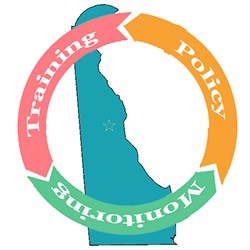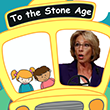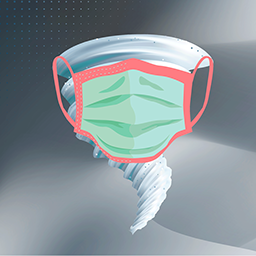Train & Hope??
![]() Training is necessary but often insufficient to ensure adoption of new practices.
Training is necessary but often insufficient to ensure adoption of new practices.
White elephant
![]() Create effective, sustainable programs before sinking money into a new building.
Create effective, sustainable programs before sinking money into a new building.
Implement, baby, implement
![]() Is traditional autism research becoming a bridge to nowhere?
Is traditional autism research becoming a bridge to nowhere?
Research to guide services
AutismSpectrumNewsNot all research is equally relevant to those focused on providing services.
A Network on Excellence
 Can statewide training increase expertise and capacity, and bridge gaps?
Can statewide training increase expertise and capacity, and bridge gaps?
A Bus to Betsy's
 The nominee to lead special education in the US could send it back to the Stone Age.
The nominee to lead special education in the US could send it back to the Stone Age.
The Business of innovation
 New services are shaped not by research but by available funds, staff, and expertise.
New services are shaped not by research but by available funds, staff, and expertise.
Margot votes! Will others?
 Learn how people like Margot exercise their right to vote in the 11 states that allow it .
Learn how people like Margot exercise their right to vote in the 11 states that allow it .
CoVid's silver lining
 Insights into the isolation and costs of disability might finally spur policy changes.
Insights into the isolation and costs of disability might finally spur policy changes.
A State of Synchro
The magic of teaching someone like Margot to ski mobilizes a remarkable army.
A Drop in the Bucket
New data suggests ASD research has little impact on improving identification.
Implement, baby, implement!
September 23, 2016

I agree, it is pretty lame, but did it get your attention? I will do anything, even bastardize Sarah Palin's admonition “Drill, baby, drill” to get people talking right now about the challenge of implementation, of translating research into practice.
What about this observation? After three decades and billions of dollars spent on research, many people with autism and related conditions are seeing little benefit in their day to day lives. Even when research clearly demonstrates these gaps in translating research into practice, or points us to specific techniques that can help, we struggle to implement what we already know. And our current system for training and funding clinicians and researchers pays scant attention to these gaps, let alone prepare the next generation of leaders for this challenge, or rally public opinion to this cause.
I am worried that autism research, in its present form, is becoming a bridge to nowhere. The academic-institutional complex of autism centers and researchers that has grown exponentially in the past two decades, fueled by grants and gifts and publications, has barely begun to close these gaps. This is not anyone’s fault; it is the simple consequence of the disconnection of science from practice, and the collective drift of researchers and funders from the people presumed to benefit from their work.
I have been obsessed with this challenge of implementation for more than two decades. This is the only way to make sense of a career path that has taken me from clinician to researcher to program leader to author, from hospitals to public schools to universities, from departments of education to psychology to pediatrics to public health, and, in an unplanned detour, the parent of a child (Margot) with significant disabilities. In end, I am a mercenary: I will work anywhere and for anyone as long as this offers me the next best opportunity to test how best to implement... baby, implement.
This website and these opinion pieces are part of that test. I do not know that an academic system that relies solely on peer reviewed papers serves my cause well. I will continue to preach the gospel of implementation to many different audiences via all of the usual channels - books, chapters, articles, and conference presentations. But I am very interested to explore how this website might address some of the shortcomings of these more traditional media, and reach the broader audience more likely to drive real progress.
What are these shortcomings? I suspect that few leaders of programs, policy, or advocacy who are working day to day to close these gaps peruse scientific journals. And even if they did, they would find few articles that provide clear guidance to pressing issues: What services should we invest in? How should we train our staff? What does research tell us about how to design programs? What policy changes will we need? How do we fund all this?
As a scientist masquerading as a public school administrator for almost a decade, I found little guidance in the traditional academic literature. As a scientist, I continue to be excited by efforts to distill the results of high quality outcome research into specific practice recommendations, as reflected in a 2011 volume. As a program leader, I happily discovered communities of other lost souls - the Network of Autism Training and Technical Assistance Providers and the National Autism Leadership Collaborative, and later, the LENDs and Act Early teams. These communities included real leaders in the development of publicly funded programs on the scale that might start to close these gaps, but whose innovations had no place in the traditional literature. So I gathered some of the best examples in a 2013 book, asking each author to include the kinds of details needed to replicate their programs, and summarizing some of the lessons to provide practical guidance going forward.
Make no mistake, this literature gap has very real consequences. As Fred Volkmar noted in the forward to the 2013 book: “Despite the many advances made and the Federal mandates for service, the U.S. has, effectively, been conducting a series of state by state (and sometimes town by town) interventions.” Across the country, whether developing services, proposing new legislation, designing training, or setting priorities for advocacy, leaders have been re-inventing square wheels, because we have no forum for sharing what round might look like.
My goal is to use this website to complement the traditional academic literature. I hope these opinion pieces help to translate specific lessons about effective programming into a more digestible format, to unearth implementation insights buried deep in the scientific literature, and to try to nudge emerging conversations about new findings to address these gaps.
I also hope to use this format to tell real stories about programs I have designed, led, learned about, or just imagined. I open with a story surrounding a proposal for college based transition program. By including details regarding the infrastructure and the underlying rationale, I hope to demonstrate the kind of practical guidance needed by readers bent on replication.
Other stories will reference my adventures in the pursuit of services for my daughter Margot (and perhaps, at a later point, of other children). One of my first stories documents our most recent attempt to fix a suspected cavity. I hope that these pieces help readers see the human costs of these gaps between research, practice, and policy.
No matter what kind of website I might create, what kind of opinions I might share, what others kinds of tools might prove useful, I just want people with autism and related conditions to enjoy the kind of life we all take for granted. In the final analysis, I really do not care what I have to do, or how low I may have to stoop, to drill this one lesson into you: implement, baby, implement!
Train & Hope??
![]() Training is necessary but often insufficient to ensure adoption of new practices.
Training is necessary but often insufficient to ensure adoption of new practices.
White elephant
![]() Create effective, sustainable programs before sinking money into a new building.
Create effective, sustainable programs before sinking money into a new building.
Implement, baby, implement
![]() Is traditional autism research becoming a bridge to nowhere?
Is traditional autism research becoming a bridge to nowhere?
Research to guide services
AutismSpectrumNewsNot all research is equally relevant to those focused on providing services.
A Network on Excellence
 Can statewide training increase expertise and capacity, and bridge gaps?
Can statewide training increase expertise and capacity, and bridge gaps?
A Bus to Betsy's
 The nominee to lead special education in the US could send it back to the Stone Age.
The nominee to lead special education in the US could send it back to the Stone Age.
The Business of innovation
 New services are shaped not by research but by available funds, staff, and expertise.
New services are shaped not by research but by available funds, staff, and expertise.
Margot votes! Will others?
 Learn how people like Margot exercise their right to vote in the 11 states that allow it .
Learn how people like Margot exercise their right to vote in the 11 states that allow it .
CoVid's silver lining
 Insights into the isolation and costs of disability might finally spur policy changes.
Insights into the isolation and costs of disability might finally spur policy changes.
A State of Synchro
The magic of teaching someone like Margot to ski mobilizes a remarkable army.
A Drop in the Bucket
New data suggests ASD research has little impact on improving identification.